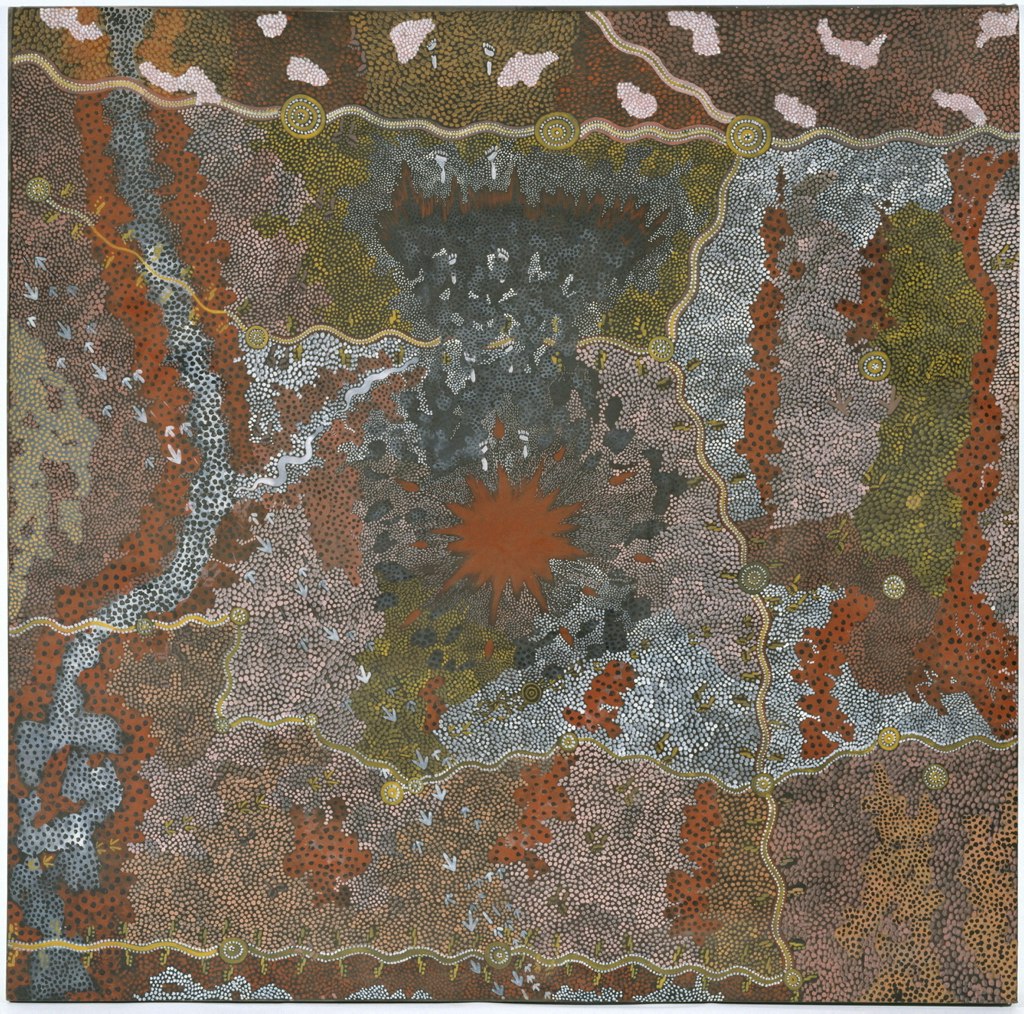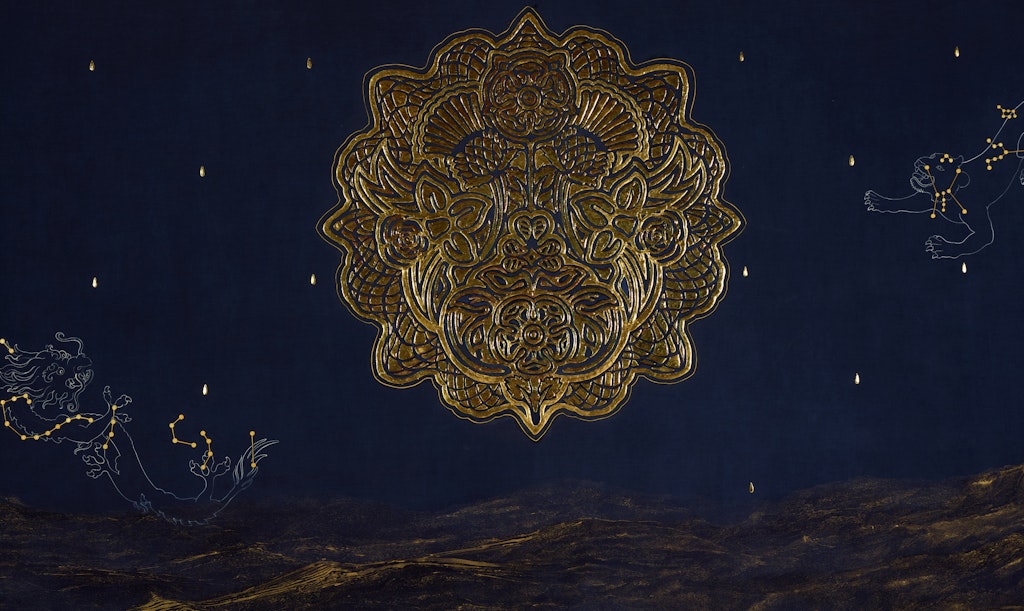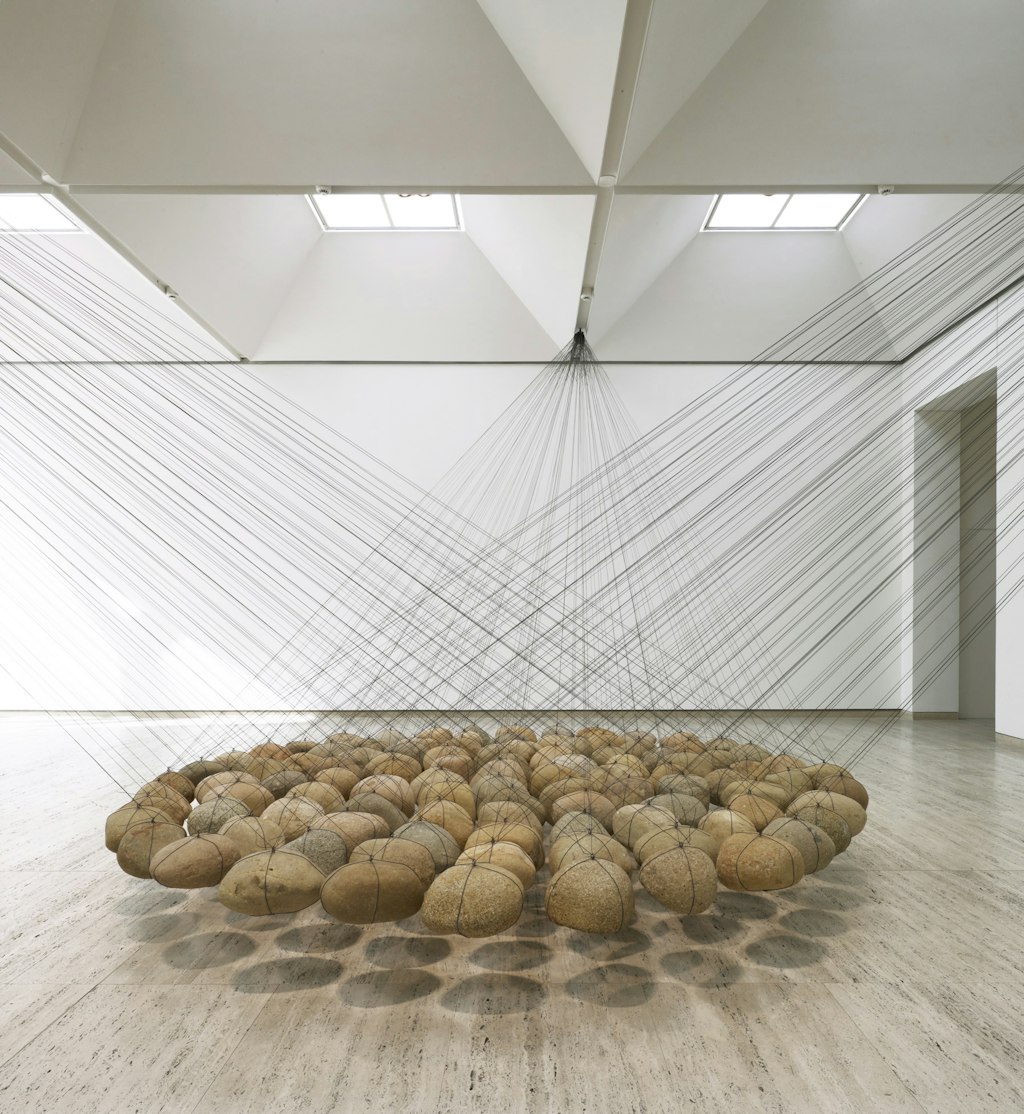Be my guide

Art is for everyone, but everyone wants something different from art. So, when our volunteer guides wait in the Art Gallery of NSW’s entrance court in readiness to give a tour, they never quite know who they’re going to meet or what those visitors will want from the experience. A rapid-fire roundup of the ‘icons’? Or a look at lesser-known wonders? A deep dive into the lives of the artists? Or a close look at form and materials? Offering something to all visitors doesn’t just require knowledge; it also takes generous spirit – a belief that nothing is more important than that moment when, with a little help, our visitors see for themselves.
The numbers say a lot: last year the volunteer guides gave an incredible 3778 tours to 61,056 visitors. And though our doors have been closed for some time, we now know that they’ll soon reopen. So to get us ready for that moment, and to celebrate National Volunteer Week, we’ve gone to the volunteer guide team and posed a ‘hypothetical’. First, we asked them to imagine nine very different visitors coming through our doors on 1 June 2020, each with a different hope for their visit to the reopened Gallery. Then we asked them to tell us about an artwork they love and which they’d like to share with each of those viewers. Quite a few of those works will be waiting for you when you revisit. The guides’ descriptions of them remind us what a joy it will be to revisit and reconnect.
A visitor who wants to understand this place
Clifford Possum Tjapaltjarri, Tim Leura Tjapaltjarri Warlugulong 1976
If I met a visitor eager to understand this place, I would lead them directly to this amazing work from 1976 by Clifford Possum Tjapaltjarri and Tim Leura Tjapaltjarri. With its feeling of an immense world viewed from above, Warlugulong is like a geographical, botanical, cultural, social, historical map of Central Australia, home of the Anmatyerr people.
There are a dozen or more highly significant stories in this painting. The central flash is the fire lit by Lungkata, the blue-tongue lizard man who punished his sons for breaking traditional law. Near the top, we see clouds bringing welcome rain and a row of women dancing to celebrate. To the right, a wedge-tail eagle pursues a hill-dwelling kangaroo. On the left, the brimming waterway winds its way across country like the great serpent Ngyalod, preserver of water further to the north.
These stories and more are woven, with rich layers of dotted paint, into an ingenious maze of animal tracks, vegetation, ceremonial grounds and meeting places – an inspiring example of the sophisticated and sustainable life of our First Nation peoples.
– Catherine Hickson
![[w[Ganesha, remover of obstacles]] 10th century, Art Gallery of New South Wales](https://www.datocms-assets.com/42890/1632731871-178-1985-mm.jpg?fit=clip&iptc=allow&w=1024)
Ganesha, remover of obstacles 10th century, Art Gallery of New South Wales
A visitor seeking hope
Ganesha, remover of obstacles 10th century
You may not even notice him as you walk into the Gallery. Or you might see him fleetingly on your way through the vestibule. But you will always recognise him by his iconic elephant head, human body, round belly and four arms, and the lotus flower on which he usually sits. He has been popular and idolised since ancient times. Right now, however, the modern world needs him more than ever, and he is certainly the deity to whom I would lead a viewer seeking hope. Ganesha is the remover of obstacles; he eradicates hurdles and creates new chapters. He is full of the excellence of wisdom and intellect and brings success. He is also a patron of science and the arts, so can be classified as a triple threat. With all these skills he seems to be the ideal divine being to resolve our global pandemic, eradicate the virus and find a cure. I’ve heard he’s even a great dancer, so we’ll celebrate with Ganesha when our Gallery doors open again.
– Ashley McDonald
![Nora Heysen [w:943[Self portrait]] 1932, Art Gallery of New South Wales © Lou Klepac](https://www.datocms-assets.com/42890/1632732147-943.jpg?fit=clip&iptc=allow&w=1024)
Nora Heysen Self portrait 1932, Art Gallery of New South Wales © Lou Klepac
A visitor who wants to be an artist
Nora Heysen Self portrait 1932
Obviously, if you want to become an artist, it helps if you begin early, live with art books and reproductions, own a great palette, and have a fantastic role model and mentor for a father. Nora Heysen (daughter of artist Hans Heysen), who painted this powerful self-portrait at 21, enjoyed all of these benefits.
But for Nora this was not sufficient. She sought her own point of view, experimenting with colour and composition, using herself as the subject of a series of paintings during the 1930s.
This determination and careful commitment to portraiture was recognised when Nora became the first woman to win the Archibald Prize in 1938. Any would-be artist could learn a lot today from a long look at this self-portrait.
– Ann Sutherland

Desmond Lazaro The Sea of Untold Stories II 2019 (detail), Art Gallery of New South Wales © Desmond Lazaro
A visitor far from home
Desmond Lazaro The Sea of Untold Stories II 2019
For a visitor far from home and longing for their loved ones, I would choose this work, which transmutes grief and loss into transcendental hope. A trail of weary refugees is dwarfed within a vast indigo canvas: a sea, a sky, a spiritual saga. Above them wheel the constellations that have guided generations of travellers across the world: the four animal guardians of Chinese astronomy – White Tiger, Vermilion Bird, Azure Dragon and Black Turtle – and the legendary Argo Navis, Sagittarius and Centaurus of the west. (You can see more of the detail of this work in the collection online.)
So many of our fellow beings, today, are seeking sanctuary from fear and dislocation. Like so many before us, we look to the great universal constants for reassurance. And when this is over, the stars will still be watching over us.
– Anne Woodham
![Sydney Long [w:9017[Pan]] 1898, Art Gallery of New South Wales © Estate of Sydney Long. Courtesy Ophthalmic Research Institute of Australia](https://www.datocms-assets.com/42890/1632787371-9017m.jpg?fit=clip&iptc=allow&w=1024)
Sydney Long Pan 1898, Art Gallery of New South Wales © Estate of Sydney Long. Courtesy Ophthalmic Research Institute of Australia
A visitor seeking calm
Sydney Long Pan 1898
Calm? It can certainly be found in this painting by Sydney Long, which creates a mood of enchantment, beauty and calm in the twilight of an Antipodean Arcadia. Here, Pan the pagan god of nature plays his reed pipe to a gathering of nymphs and satyrs who dance with free abandon.
It is a place of pastoral harmony set in the Australian bush. Lit by the pale golden disc of the setting sun, the scene is realised through a palette of muted mauves, blues, soft greens and the rhythmic art nouveau-inspired patterning of the silver-barked gum trees that echo the curving, dancing bodies. Sensation, mystery and mood unite in this poetic masterpiece, which offers a space for distracted minds to escape to.
– Jackie De Diana

Ken Unsworth Suspended stone circle II 1974-77, 1988, Art Gallery of New South Wales © Ken Unsworth
A visitor anxious about the state of the world
Ken Unsworth Suspended stone circle II 1974–77, 1988
Tense, tied up in knots, strung out in an unnavigated space? Perhaps Ken Unsworth’s Suspended stone circle II provides comfort. 103 heavy, weathered river stones, unified by shape, colour and weight, are held taut. Each is knotted by three wires attached to three rings bolted to the ceiling. The boulders don’t touch each other and hover within a tense disc of force. They are contained by a complex, secure web of steel. The effect is dynamic, rigorous, formal.
This is a heavy work, but majestically it floats – suspended, graceful and poised in space. On the floor a mosaic of shadow creates a ghost-like impression of otherworldliness.
Hang in there.
– Robyn Bathurst
![Ricky Swallow [w:125.2004[Killing time]] 2003-04, Art Gallery of New South Wales © Ricky Swallow. Courtesy Darren Knight Gallery, Sydney](https://www.datocms-assets.com/42890/1632789174-125-2004-mm.jpg?fit=clip&iptc=allow&w=1024)
Ricky Swallow Killing time 2003-04, Art Gallery of New South Wales © Ricky Swallow. Courtesy Darren Knight Gallery, Sydney
A visitor who is unsure about contemporary art
Ricky Swallow Killing time 2003-04
Contemporary art can be a stumbling block for some viewers. However, walking around this wonderful work, there is a sense of stillness and quiet observation in the intricately carved and lit dining table. The daily catch of fish flows abundantly from the bucket, while the tablecloth and twist of lemon peel drape naturalistically over the edge of the table. It is a work about memory, evoking Ricky Swallow’s childhood meals around this table, the fish caught by his father, and the time spent carving the work. And it also recalls the luscious fruit and food depicted in 17th-century Dutch still-life paintings and Jessica Nagy’s arresting photographs of fisherwomen and a table covered in fish-parts in the ARTEXPRESS 2020 exhibition. The threads of art …
– Mary Lou Gilbert
![Julie Rrap [w:[Hairline crack]] 1992, Art Gallery of New South Wales © Julie Rrap. Courtesy Roslyn Oxley9 Gallery](https://www.datocms-assets.com/42890/1632789782-15-1993-mm.jpg?fit=clip&iptc=allow&w=1024)
Julie Rrap Hairline crack 1992, Art Gallery of New South Wales © Julie Rrap. Courtesy Roslyn Oxley9 Gallery
A visitor who wants to go out of their comfort zone
Julie Rrap Hairline crack 1992
This artwork by the dynamic Sydney artist Julie Rrap reliably baffles its audience and provokes questions such as ‘what does it represent?’ The artwork consists of a long horizontal plastic tube containing a dark substance, and this can indeed seem puzzling. But for viewers willing to take a closer look, there is a lot to discover and think about. Rather than tell the whole story, I would ask those viewers to examine the materials closely and identify what lies within the tube – that unruly sign of human life, hair! Then I would ask them to make a quick mental rotation of the artwork through 90 degrees and to consider the title carefully. I would then leave their imaginations to do the rest.
– Jan Angus
![Miwa Yanagi [w[Yuka]] 2000, printed 2007, Art Gallery of New South Wales © Yanagi Miwa](https://www.datocms-assets.com/42890/1632790228-7-2014-a-b-a-mm.jpg?fit=clip&iptc=allow&w=1024)
Miwa Yanagi Yuka 2000, printed 2007, Art Gallery of New South Wales © Yanagi Miwa
A visitor just out of ‘iso’
Miwa Yanagi Yuka 2000, printed 2007
What is that one thing you really want to do? The one place you want to visit? What is that one sensation you’ve been missing the most? When you come out of iso, the work I’d most love to show you is Miwa Yanagi’s Yuka. Don’t wait, don’t overthink it. Just take a buddy, get in the side-car, and go!
– Pia Hughes